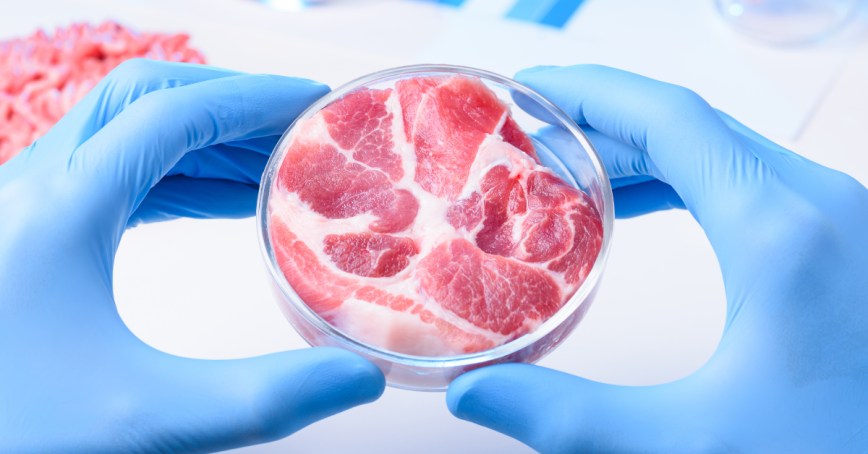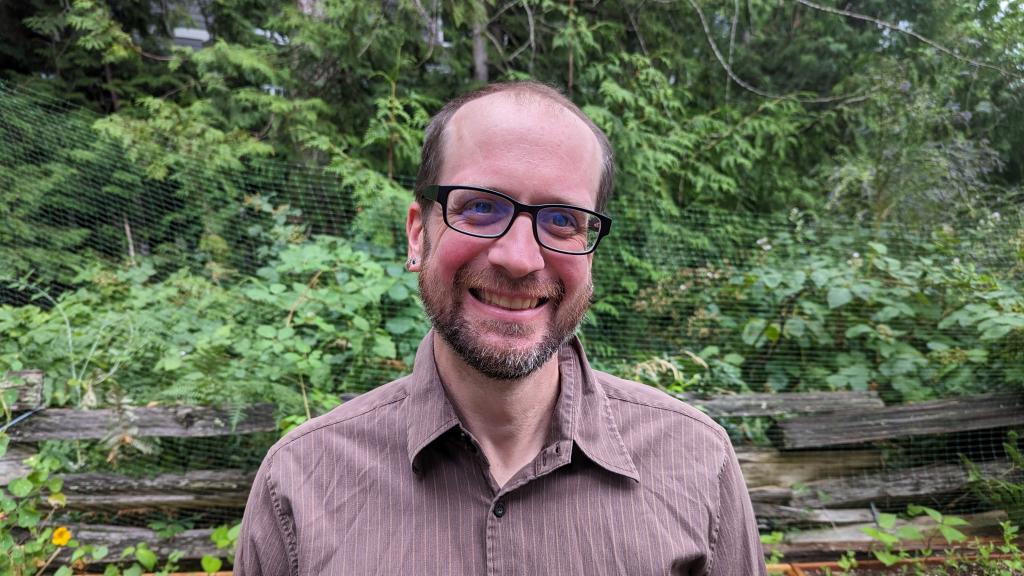Is lab-grown protein worth all the hype?
Topics
Featured
Share online

How do you make chicken nuggets without chicken? How do you produce milk without cows?
The answer to both questions lies in the emerging field of cellular agriculture. A Royal Roads University researcher is part of a team that recently released a report addressing the question, “What are the key considerations and actions needed for guiding the trajectory of cellular agriculture toward sustainable, resilient and just food systems?”
But first, an explanation: “The purpose of cellular agriculture,” says Dr. Rob Newell, “is to be able to create things that were traditionally made out of livestock agriculture that would be biologically equivalent or near biologically equivalent to their animal counterparts.”

Dr. Rob Newell is an assistant professor and Canada Research Chair in Climate Change, Biodiversity and Sustainability.
He says researchers working for universities and private companies are exploring a variety of methods and outputs. From growing salmon flesh in a lab to inserting cow DNA into yeast or bacteria, they can create dairy proteins for milk products such as ice cream — but without harvesting salmon or raising and milking cows.
“Part of the reason there’s so much hype and promise around cellular agriculture is because of how versatile it could be in terms of making different products,” says Newell, an RRU assistant professor and Canada Research Chair in Climate Change, Biodiversity and Sustainability.
He’s also the former associate director, and a current research associate, with the Food and Agriculture Institute at the University of the Fraser Valley. It’s with UFV colleagues Alesandros Glaros, Stefania Pizzirani and Lenore Newman that he helped produce The Role of Cellular Agriculture in Sustainable, Resilient and Just Food Systems: An Action Agenda.
“Part of the reason there’s so much hype and promise around cellular agriculture is because of how versatile it could be in terms of making different products.”
In partnership with the non-profit organization New Harvest, and with funding from the Future Skills Centre’s Shock-proofing the Future of Work program, the researchers explored “the opportunities, challenges, and key considerations for developing a cellular agriculture industry in British Columbia (and broadly Canada) in ways that support transitions to sustainable food futures.”
It's not enough to develop the technology, Newell says, without also taking into consideration whether man-made animal products reproduce the environmental, social and economic problems associated with conventional livestock agriculture, such as greenhouse gas emissions, inequities in the food system and proliferation of low-nutrition products.
“Cellular agriculture is supposed to be the route to get us away from these harms, these ills that livestock agriculture is causing. That’s the promise,” he says. “But when you start taking a more comprehensive social, environmental and economic perspective around cellular agriculture, you start questioning: Is it actually going to meet the promise? What sort of tradeoffs, what sort of issues and challenges might we see implementing this stuff? What sort of policies can we create to mitigate against such issues?”
Cellular agriculture stacks up better on use of resources such as land, soil and water, he says, but environmental benefits are not as consistently superior across the board, and energy consumption is a critical question mark.
Still, Newell is excited about the possibilities, and while he says he hasn’t yet tried any lab-grown protein yet, he notes, “I will. I definitely will.”
Interested in learning more about our programs in the School of Environment and Sustainability? Browse our programs or request more information.